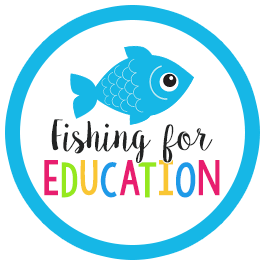Hands-on, interactive activities are so much fun! And when you add food they are even better!! I love incorporating highly engaging, edible activities into our week, and I've got a few activities we've done recently to share with you.
I'm Jem from Jem's Bright Buttons. I had an amazing teaching buddy last year who was always looking for ways to add food, or other interesting or novel resources, to our lessons with the preps (kindergarten). Now that I've moved to grade 2/3 I'm still inspired by that teacher, and I continue to look for ways to add novelty to our learning.
Our soil consisted of:
- Large marshmallows for the bedrock
- Small marshmallows for the parent material
- Cheerios for the subsoil
- Coco Pops for the top soil
- Crushed chocolate biscuits for the humus
- Mint leaf and lolly snake for the organic material
Students also had to do a labelled drawing of it:
We investigated whether moving water or still water caused more erosion/weathering using M&Ms and water.
Students filled two plastic cups halfway with water, then dropped in a Mega M&M. One cup they swished around, the other they left sitting on the table. They drew and labelled their observations, and had to write a conclusion about what happened.
To 'tune in' to the topic, we looked at a simplified version of the rock cycle using sugar cubes. Students crushed them (weathering), moved the crushed sugar onto aluminium foil (erosion), and we placed the aluminium foil 'boats' on an electric fry pan to heat the 'rocks' and change them, then looked at how they had changed.
All three activities helped our students to understand complex processes and changes in a hands-on way, and the novelty of food has helped them remember the theory and subject content.
- Sorting M&Ms and Smarties.
- Sorting M&Ms, but writing the groups as fractions with older students (no photo of this one).
- Using them as counters, especially on the 100th Day of School.
- Or as counters to show division, or 'fair sharing'.
- Tiny Teddy subtraction
- Jelly bean graphing
- Making 3D shapes with marshmallows
- Learning about mean, median and mode with Oreos
I'd love to know:
Jem
Science
We have a strong focus on Science at my school, and three of my most recent Science lessons have involved food, and my students loved them!! We are learning about Earth Science, and our big Inquiry question is "How does the Earth's surface change?" We are looking at things like soil, erosion, weathering, etc. so one of our first lessons was to define what the Earth's surface is made of. A quick search on Pinterest, and I found this amazing soil layers activity:Our soil consisted of:
- Large marshmallows for the bedrock
- Small marshmallows for the parent material
- Cheerios for the subsoil
- Coco Pops for the top soil
- Crushed chocolate biscuits for the humus
- Mint leaf and lolly snake for the organic material
Students also had to do a labelled drawing of it:
We investigated whether moving water or still water caused more erosion/weathering using M&Ms and water.
Students filled two plastic cups halfway with water, then dropped in a Mega M&M. One cup they swished around, the other they left sitting on the table. They drew and labelled their observations, and had to write a conclusion about what happened.
To 'tune in' to the topic, we looked at a simplified version of the rock cycle using sugar cubes. Students crushed them (weathering), moved the crushed sugar onto aluminium foil (erosion), and we placed the aluminium foil 'boats' on an electric fry pan to heat the 'rocks' and change them, then looked at how they had changed.
All three activities helped our students to understand complex processes and changes in a hands-on way, and the novelty of food has helped them remember the theory and subject content.
Maths
Some activities I've done with students in the past for maths using food include:- Sorting M&Ms and Smarties.
- Sorting M&Ms, but writing the groups as fractions with older students (no photo of this one).
- Using them as counters, especially on the 100th Day of School.
- Or as counters to show division, or 'fair sharing'.
Our collaborators
Alison and Christie have also used food in their maths activities. Here are some of their awesome ideas:- Tiny Teddy subtraction
- Jelly bean graphing
- Making 3D shapes with marshmallows
- Learning about mean, median and mode with Oreos
I'd love to know:
How do you use food, or other novelty resources, in your teaching?
Jem

























